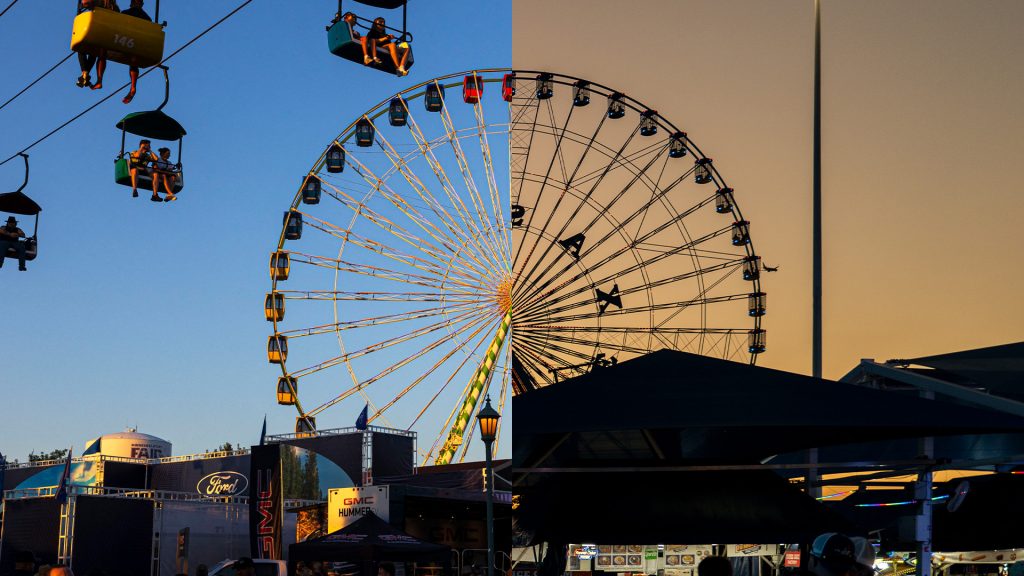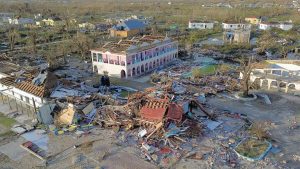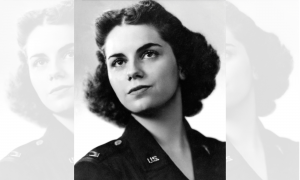Measuring the Texas and Minnesota State Fairs: From animal births and fried foods to the Red River Rivalry

Texas and Minnesota each claim to be home to the nation’s largest state fair. And both states are correct — depending on the measuring stick used to make the determination.
The State Fair of Texas welcomed more guests in 2024 than any other state fair in the country. Over the course of 24 days, Texas recorded 2.4 million visitors. That’s significantly more than the 1.9 million that visited the Minnesota State Fair over 12 days. Point, Texas. Right?

“It’s really hard to say who is the biggest because everyone likes to measure off of different things,” said Taylor Pulfer, communications director at the State Fair of Texas.
Which state has the biggest state fair?
While Texas had the most guests over the entire season last year, Minnesota consistently saw more visitors each day. So, when it comes to daily attendance, Minnesota won big in 2024, with an average of 161,739 attendees, compared to 99,411 in Texas.
Measuring the size of the fairgrounds? That’s Minnesota again — at 322 acres.
“The State Fair of Texas is 277 acres,” Pulfer told Straight Arrow News. “So, I know we’re not the biggest when you consider the actual square footage. However, when you’re talking number of days and the folks that come through our gates, I believe we are.”
The battle over which fair is biggest is fun, sure. But it’s mostly about bragging rights rather than a true, stiff competition, according to Pulfer and Minnesota State Fair CEO Renee Alexander.
How do state fairs benefit their local economies?
“There’s always friendly competition, of course, but to be honest, we are friends with all of these fairs across the country,” Pulfer told SAN.

And when one state fair boosts another, they can both, in turn, boost the economy.
“It’s been a while since we’ve done a full economic impact (study), but we believe we’re about $300 million annually,” Alexander told SAN. “So that’s about the size of a Super Bowl that goes into a market.”
That money added to the Minnesota economy comes from people flying in, booking hotel rooms and eating at local restaurants — not to mention spending $2.3 million on the corndog-adjacent, pancake-batter-slathered Pronto Pups within the fairgrounds itself.
“We have entrepreneurs that are on these fairgrounds, that are building small businesses, that are sustaining businesses,” Alexander said. “Kids that have their first jobs, retirees that are coming back to work during the fair.”
In Texas, Pulfer told SAN that the state fair adds upwards of 2,000 people to its payroll each fair season. Once the vendors and concessionaires are tallied up, Pulfer said the fair adds about 7,000 jobs for the North Texas economy. The result: A “ripple effect that the fair event and the 24 days have on all of Dallas-Ft. Worth.”
What’s the purpose of a state fair, anyway?
That economic boom is a boon. But it’s not the sole purpose of a fair. Both Minnesota and Texas have more than a century’s worth of history wrapped into their fairs, which started as 19th-century gathering places for farmers to learn about innovations and improvements in agriculture.
Unbiased. Straight Facts.TM
In 2024, Texas saw 2,385,855 “Howdys” or visitors, while
Minnesota saw 1,925,904 visitors go through the front gates.

Both fairs still pay homage to their farm-focused roots: In Minnesota, last year’s fair featured a pumpkin that weighed 1,808.5 pounds, while the birthing barn at the Texas fair welcomed 76 new baby animals. That included 43 piglets, 13 calves, 12 baby goats and eight lambs.
But fairs have grown to entice people who aren’t enthused solely by squash and livestock.
“We have so many different categories for people to compete in,” said Pulfer. “Maybe you’re a photographer and you want to enter our photography contest. Or maybe you want to enter one of the cooking contests and see if your cookies are the best in the state.”
Or maybe, you just want to see how high in the sky a ride can take you. If you’re still measuring: The answer in Texas is 500 feet, aboard the four-and-a-half-minute-long Top O’ Texas Tower ride. That’s 200 feet above the apex of Minnesota’s Space Tower.
The post Measuring the Texas and Minnesota State Fairs: From animal births and fried foods to the Red River Rivalry appeared first on Straight Arrow News.





